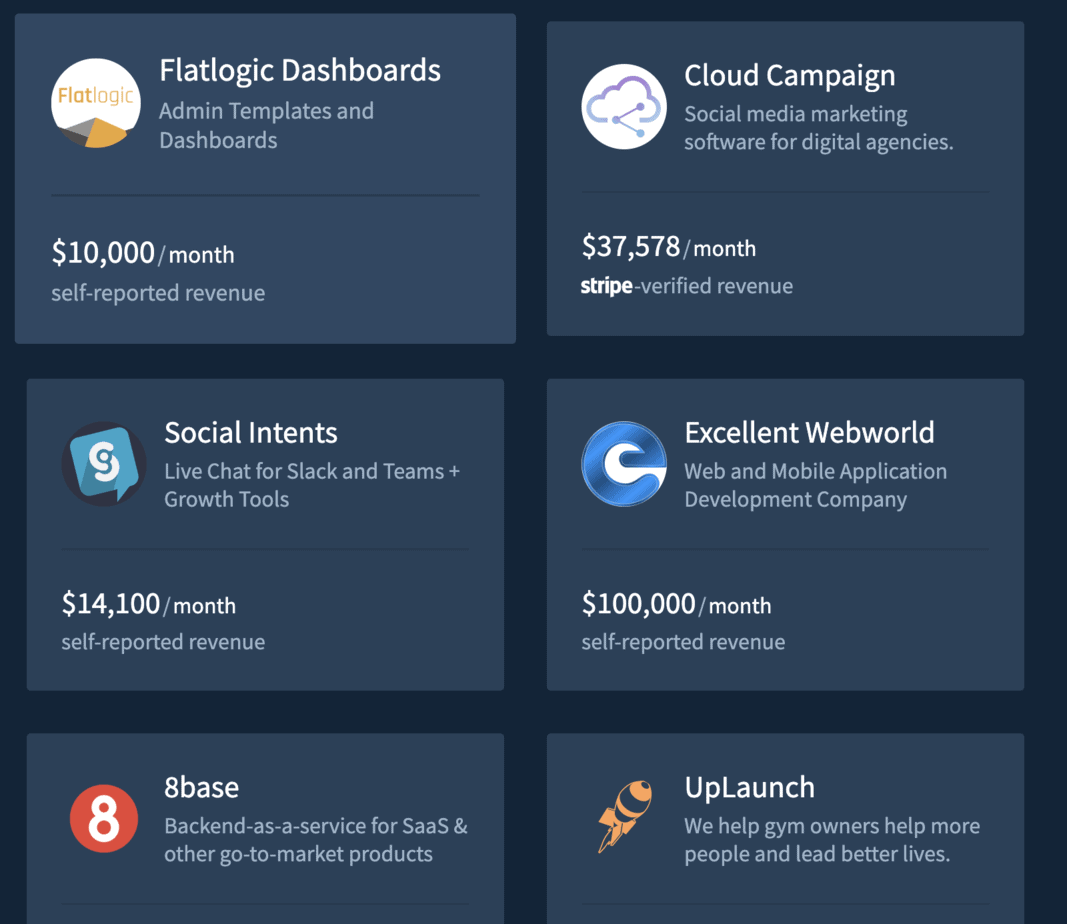Note: This post may contain affiliate links which means if you click on a link and purchase an item, we will receive an affiliate commission at no extra cost to you.
There are 1.7 billion people trying to learn English right now, making English teachers one of the most in-demand (and easy to land) jobs in any country. Teachers make $16-24/hour, which means working ~24 hours per week is enough to cover a nomadic lifestyle.
Most English teaching programs require that you:
- Are a current resident of the US or Canada
- Have formal or informal teaching experience
- Have a college degree
Below you’ll find an extremely in-depth guide to teaching English online (from TeachingESLOnline.com). The guide covers the three different types of online teaching (getting a job with a company, freelancing, or finding your own students).
TeachingESLOnline focuses on finding your own students and working for yourself. One other great course with a similar focus is this highly rated Udemy course.
If you’re more interested in working for a company, VIPKid is the most popular English teaching platform. There are many other companies that you can work for as well. If you’re looking for an in-depth guide to VIPKid, we recommend this one and this one.
Now let’s jump into the video and the information!
Table of Contents
The Written Version:
Hello, this is Jack from teachingESLonline.com. And in this video we’re going to go over a lot. We are going to talk about what you need in order to become an online English, or any language, teacher. And if you don’t know who I am, I have been teaching English online since 2011. So I’ve offered one to one lessons, group lessons, ebooks, and also online courses.
And I’ve also been helping teachers teach online since 2013. And what I want to do is just to give a brief overview. I say brief, this video might go on about the different options available to you which one might be best for you. And also just to give you some advice and some tips in order for you to thrive online, in order for you to find your own students if that’s what you want to do. So let’s start with the three ways in which you can teach online.
Number one is to find a job. Number two is to be a freelance teacher on certain platforms. And number three is to start your own thing. Now before I get too, ahead of myself, I know that some of you watching this will have no experience. I know that some of you watching this will have a lot of experience, but nothing online. And others might have a job online, but they’re looking to do other things. So be sure to adapt what I say to your situation.
And also know that I highly recommend that new teachers get as much experience as possible, because this will put everything else into context and allow you to understand what this really is. And a quick way to get some experience is to volunteer or to do language exchanges. So just look up a language exchange and start this process. Get some experience so that you can actually get some momentum. And when you’re doing your training and learning new things, and it puts everything into context. Okay, having said that, uh, one more thing. Also know that these three ways in which you can teach can be very flexible. You can start with one, go to the other. You can do two or three at the same time.
Option 1: Find Companies to Teach With Online
Okay, I start with an online job. So, an online job is simple, where you get contracted by a company, they provide you, the students, you teach the students and then they pay you usually an hourly rate for what you teach. Now, I am not an expert in this area. I don’t have a lot of experience here. However, I do know of one company that I recommend. It’s the only company that I’ve done some research on, and where I found that yes, this company is good people like working there. So I’ll leave a link to that company below. But at this moment, it’s only available to teachers based in the USA and Canada, and teachers who get up very early to teach because of the time difference. So there are restrictions there. And I’ve also found that a lot of companies want native speakers. So they always talk about you need to be a native speaker. The benefits here of obviously working for a company is that you just turn up and teach. You don’t have to worry about anything else, you turn up to your lesson and you teach.
Negatives. Usually the pay is very low. And you have to work on a schedule, according to the company, not based on when you want to work. But yeah, it just might be for you, this type of work might be perfect for you in your situation. But again, you might be able to have this job and do other things and build up something else in the background. Just make sure that you read the contract, and carefully, so that you’re not getting yourself stuck into a position for too long. I also want some feedback here because if you have worked for a company, then let me know below and tell me your experience and highlight companies that are good. So any companies out there that you know are good that you’ve worked for in the past, leave them below so other people can go and find these and apply to those positions.
Option 2: Freelance as an Online English Teacher
Option two, is to work as a freelancer on some type of freelancing website. So this is how I got started. And I taught this way for about a year I think, when I first started teaching online. And what you do here is you put, you create, your own teacher profile. Usually, you have a video, you set your prices and you leave a description about who you are as a teacher, who you help, and what type of lessons you give. And then the idea is that students who go to this website looking for teachers will find you and book a lesson with you. So again, this is not as much work as setting everything up yourself, but you are obviously restricted to the policies and just the way that these websites work. So for example, a popular website here is “Italkie” and a lot of teachers use “Italkie.”
So the competition for teachers is very high. But if you can get it working, then you’ll get a stream of students coming in and booking lessons with you. And what students look for is things like the right teacher for them. Connecting with a teacher, somebody with good reviews, somebody with an engaging video. So just think about ways that you can stand out on this platform, ways in which you can really get across who you are as a teacher and who you help so that students get excited when they see your profile.
And I found that the more time you spend using the forums, interacting with students, interacting with people who use that platform too, the more you will get out of it. It’s very difficult just to like put up a profile, a non-generic, you know, video, something that is a little bit boring, and then wait for students to come, because that’s not going to work. And if you have worked for some of these platforms, and again, share your experiences below, let me know some good platforms that new teachers can apply to.
Option 3: Start Your Own Online Teaching Business
The third option is to do this yourself. Okay? So where you create your own teaching business, your own teaching platform. You do your own marketing. You set your own prices. You’ve set your own policies, and then students find you online and book a lesson with you. And this is just like offering private lessons in person. And I know a lot of people when they go teaching abroad, they’ll have a job but also offer private lessons. And some people just focus solely on private lessons.
So it’s very similar to doing something like that, but you are online. And that is what the rest of the video is going to focus on where I’m going to go over what you need in order to get all of this setup. And, again, this is not for everyone. Some people start this and realize it’s not for them. They don’t know the type of work that they have to put in, or they don’t execute correctly, or they have the wrong strategy and they get frustrated. So know that there is work to be put in here. But it’s also this area gives you the most control. It helps you.
Like I was saying, doing your own thing allows you to have greater control, but it also requires you to put in the work and to deal with other things that you won’t have to deal with if you have a job. So with all that in mind, let’s go over some of the things you’ll need and some of the things to think about if you want to go independent. And the first thing to note is that I am not a legal expert here. I know nothing about taxes, and I can’t give you advice on taxes or the legal setup of your business. So talk to someone in your local area. Don’t ask me in the comment section below.
So we’re going to focus on marketing, we’re going to focus on the type of things that you need. And a lot of people start with “Okay, what equipment do I need in order to do this? Do I need to get a new computer? What internet connection do I need? Do I need a camera?” And the theme throughout this video, and something I talk about all the time, is to start with what you have right now, or to start with a budget and then invest more once you can.
For example, I started off with an old, slow laptop that was very frustrated. I also started off with a $70 webcam to create my videos. I didn’t have an external microphone that I liked, it was terrible. It was like this clip on mic that didn’t work very well. But since then I’ve now got this camera, which I’m using, which you can’t see, fancy microphone, some lighting here, and an iMac where I can edit 4k videos. But start with what you have right now.
And know that a couple of things are important are the audio. So a good microphone or headset or anything that allows you to hear your student clearly, and so that they can hear you too. That I think is one of the most important things.
We can also just teach on your phone. So you can use apps on your phone to teach, apps to market, and students, you can do everything on your phone but just start with what you have now. Get something if you desperately need it. And if it’s within budget, I’ll leave a link to some of the equipment that I use and some of the equipment that I recommend just to go into more specifics in the description.
Okay, so another thing you’re going to need is software, or some kind of video conferencing program to use. A lot of people start with Skype. And for good reason, because many people know how to use this. You probably have some experience with Skype unless I’m just really outdated. And talking about people who use the internet 10 years ago. Maybe use WhatsApp, maybe you use Facebook Messenger. But what I recommend is something called Zoom. And Zoom has the best connection. It has some really good features, and it’s very lightweight, so it’s not going to take up a lot of room. It doesn’t take long to load But the connection is just so good. Whatever software and like design, they use an algorithm they use to make the connection great. I don’t know what they do, but the connection has always been just fantastic for me. So I recommend checking out zoom. I’ll leave a link for my affiliate link below. It’s free to use for one on one lessons, or group lessons up to 14 minutes. After that, then you might have to pay a monthly fee, but all one to one lessons. You won’t need to upgrade to the paid platform.
A question a lot of people ask me is “Okay, I’m going to teach online. How can I do this? What resources do I need? Like what lesson plans can I get?” Now I made a video on this so I won’t go into too much depth here but know that you can build resources over time, and that there are many great resources for specific online lessons, because online teaching has boomed over the last 10 years. And people are now providing resources, which makes it easier for teachers like you. But don’t think that you have to come up with 100 lesson plans before you start teaching. Allow your students to dictate your lessons because everyone is different.
And if you have lots of experience teaching private lessons, you’ll know that when you go into a lesson, you don’t really know what resources you’re going to use because this student might be focused on business English or another student might have problems with grammar. And what you use with this student is very different to what you use with this one. So allow your student to dictate what kind of resources you’re going to use.
And just on a separate note here is to think about what kind of teacher you’re going to be. So do you want to focus on business English? Do you want to focus on helping people with generic everyday English? Do you want to help people pass the IELTS exam? How are you going to teach? What is a typical lesson of yours going to look like? Who is your typical student going to be? And you don’t have to get this perfect. No one gets it perfect at first try. Let this evolve over time, especially if you are new to teaching. Like I said, Get some language exchanges. Learn what you enjoy teaching, get some experience, and then let this become more focused as you develop into your teaching career.
How to Find Students
So we’ve talked about the equipment, you use, the software. We’ve talked about lesson plans, we’ve talked about what you’re going to offer, what type of teacher you are. Let’s now talk about probably the most important thing: how to get students. Now in order to get students to sign up with you. You’re going to need three main things.
Firstly, some kind of offer to get them in the door. This could be a trial lesson. It could be where they download something from your website, and then they’re now on your email list, or it could just be buying a lesson directly from you. But I recommend offering a trial lesson if you’re focusing on one to one lessons. So this is where you offer either a free or discounted first lesson, usually shorter, in order for you to connect with the learner to show what kind of teacher you are, and then so that you can offer more lessons on top of that one.
And the reason why a trial lesson works is because students won’t want to commit 10 lessons from you or even just a full-price lesson without seeing what it’s like first. They want that lesson, that initial lesson, to see if you can help them as a teacher. And in order to get this set up, use something like Calendly where you can create your own schedule and a learner can book a time with you and pay you if you are offering paid lessons at this stage, without you really having to do that much. So make it as easy as possible for a student to sign up with you.
Another way to do this is to send students down some type of funnel, or process where you can sell your lessons over a period of three to five days for example, and it works like this, you can offer something for free, a free guide, 10 phrases that you’re going to need in English class or why this method works for learning English, something simple that people can download from you. And when they download it from you, they then go on your email list. And you send out automated emails to your students, your new students saying okay, this you also need this for learning English. Oh, by the way, I offer online lessons.
Then you send out another email. Give them more advice, helping them in a different way, saying, “Oh, do you want a lesson with me, book here.” So you can see that this initial offer isn’t as daunting as that, get a trial lesson with me, or book 10 lessons with me. It’s a very small step to take so that you can make that connection with your learner through email, and then send them your offer once they’re a little bit warmed up to who you are. If you’re looking for a quick way to get started, then start with that trial lesson. And then look to build in this email marketing over the long term. Again, resources below for how to get started with email marketing. And I’ll also leave a link to a lesson on how to use calendly.
How to Get Students to Sign-Up for Your Lessons
So once that system is in place, and you’re happy with it, the next thing to think about is how to find students, how to attract students to your calendar, how to bring students into this system that you have built. And the first way so many people overlook is to get in contact with ex students, or people that you know who would benefit from your lessons.
Again, if you have no experience here, then this is going to be more difficult. But think about language exchange partners that you’ve had in the past. Tell them, oh, I’m now offering online lessons if this interests you, or if you know somebody who would benefit from these lessons and share this link with them. So you’re making it easy for them to make that commitment through this calendar page or through downloading something for free. And then you’re putting that out to the world.
Firstly, start with ex students and your contacts because these are people who have already benefited from your lessons. They already know you. So that barrier to get started is a lot smaller.
Another way is to use classified postings. So to use things like Craigslist or the equivalent of where you live now. And just post about the fact that you offer online lessons. This worked for me so well, when I first got started, where people were just signing up. They’re taking trial lessons from all these classified posts that I wrote.
Just like I talked about before with “italkie,” it’s important to stand out as a teacher. So look at the postings that other people have made and think about how can I make this better? How can I entice people to sign up for my trial lesson? And then we have things like social media and YouTube. And this is more of a long term play, where you’re leveraging social media, you’re helping people on Facebook, on Instagram, on YouTube, on Snapchat, on any, Pinterest, and you are helping people and then saying, “oh, by the way, I offer one to one lessons,” and giving people the link in order to do that. This is a strategy that I focused on since 2012. I’ll make a video on YouTube, my sub-fluency channel.
I’ll mention that I’ve got a book a free book and leave a link in the description. People then click on that link, download the book, they then receive emails from me, giving them more helpful tips. And then also, “hey, I’ve got a course, why not check out this course, why not try this course.” And that’s how I’ve been making sales for my online programs. And you can adapt this to anything really. So if you’re offering child lessons, again, you put content on social media, you have some kind of action, trial lesson, or download this for free. And then they go through the system that you’ve set up so that they can book something with you.
You might be feeling a little bit overwhelmed at this stage and thinking, “I don’t know how to make YouTube videos. I don’t know how to use Instagram or Facebook and these systems that Jack’s talking about just sound a little bit complicated,” but like I said before, start small, get a system in place, learn about new things and constantly build things over time, because I started out exactly the way I’ve talked about here. I had a free trial lesson in place; I use classified postings. Then in 2012, I think, I start to make YouTube videos. And obviously, I didn’t get much traction at first, but things built up over time to where now I have 145,000 subscribers on YouTube. But that’s been a process over time.
And just start small, get started, keep improving as you go. You’re not going to get this down perfect to start with. All these different things, all these moving parts are quite confusing when you’re getting started. But I hope that this video has given you an introduction to what it takes in order to teach English online or any language online.
And going back to what we talked about, maybe this isn’t for you. Maybe you want to use Italkie or to get a job. Maybe you already have a job and you want to build this in In the background, and to become an independent teacher, next year, or in six months, and that’s cool, you know, think about ways that you can build up an audience over time. So that when you want to get into online teaching independently, you have something set up in place.
How to Price Your Lessons
Oh, I forgot to mention how to get paid, and pricing your lessons. Now, I don’t like to talk too much about pricing, because it depends on what you offer. The type of students you target what you’re comfortable with. But know that this is flexible, that you can increase your prices over time if you set your prices low. Or you can offer discounts if you feel like your prices are too high for people. So don’t worry too much about that go with what you feel comfortable with now, and change this over time. And for payment. Paypal, just use PayPal. I haven’t found another system that you know I recommend instead, maybe you have a different payment system in mind, but I’ve always used PayPal when it comes to these kind of lessons.
Okay, I think that’s most of what I wanted to talk about. It’s been a long video. And if you have any questions about this, then please leave them in the comment section below. Check out some of my other videos where I go into these different areas in more depth. Again, I have a free training course that goes through expectations how to get students with more of a PowerPoint style video so you can focus on these different areas. I have a course, the “teach English online” course check that out. And yeah, thank you for watching this video. If you found it useful, please like and share it. Again. Thank you for watching, and I’ll speak to you soon. Bye.










Leave a Reply
View Comments